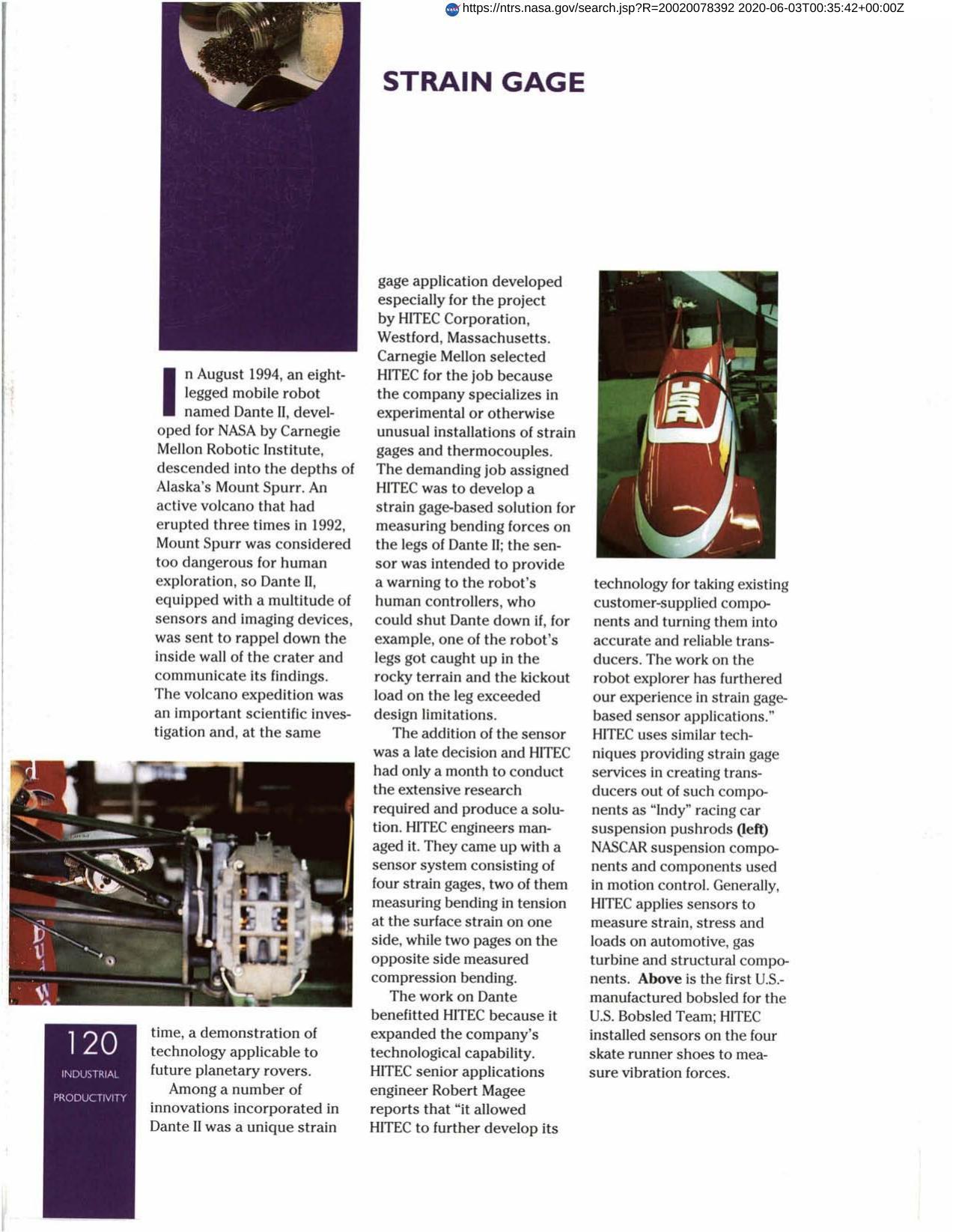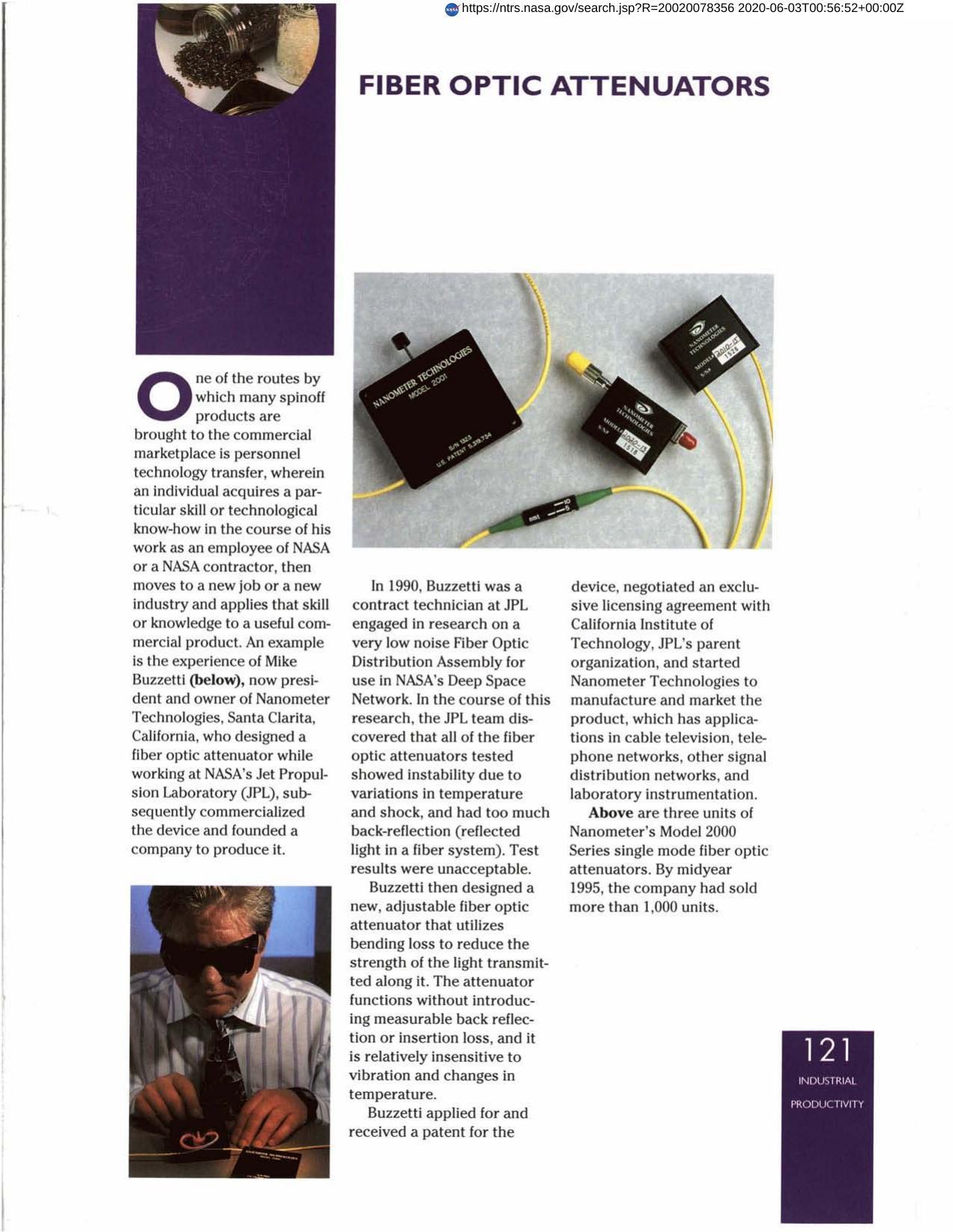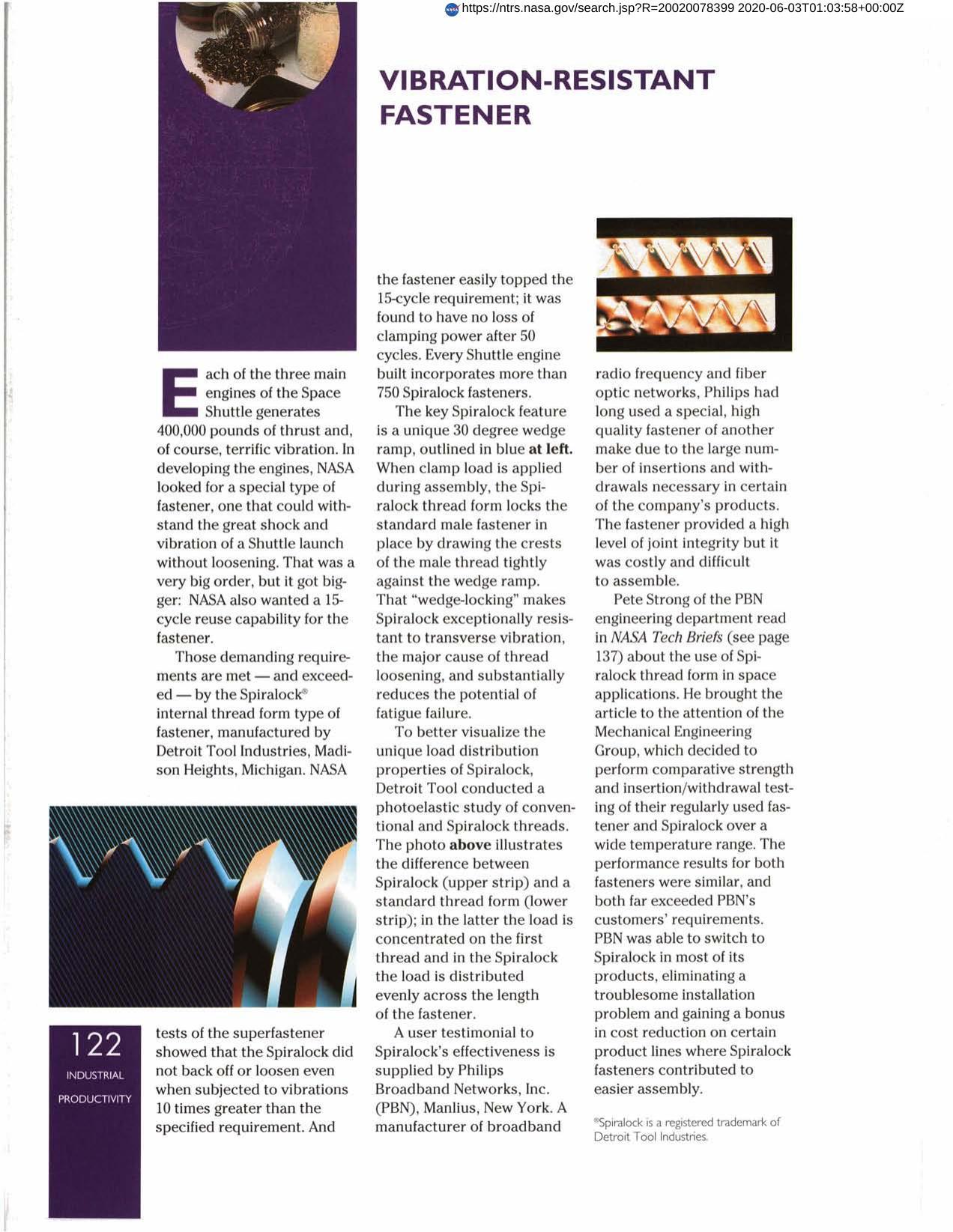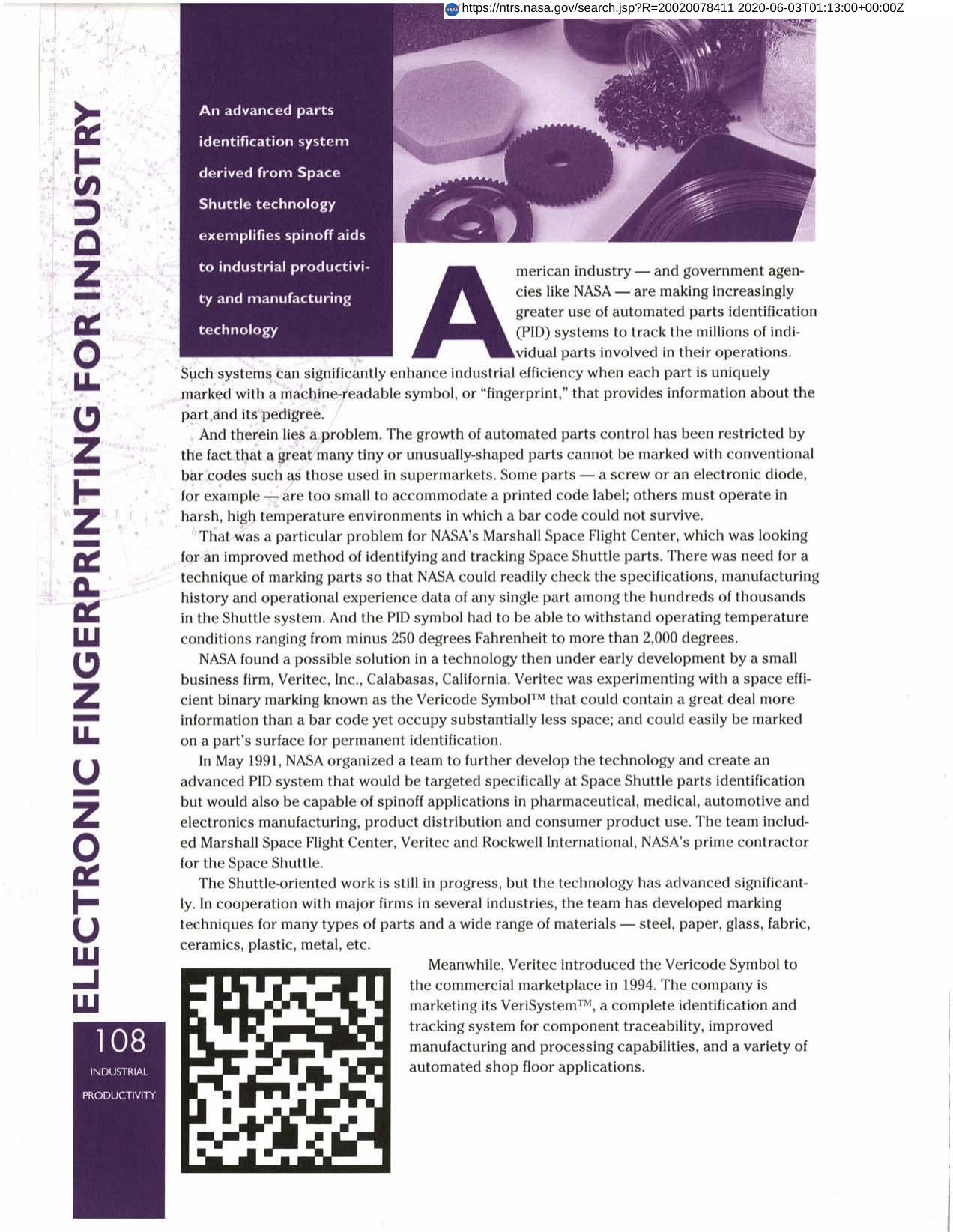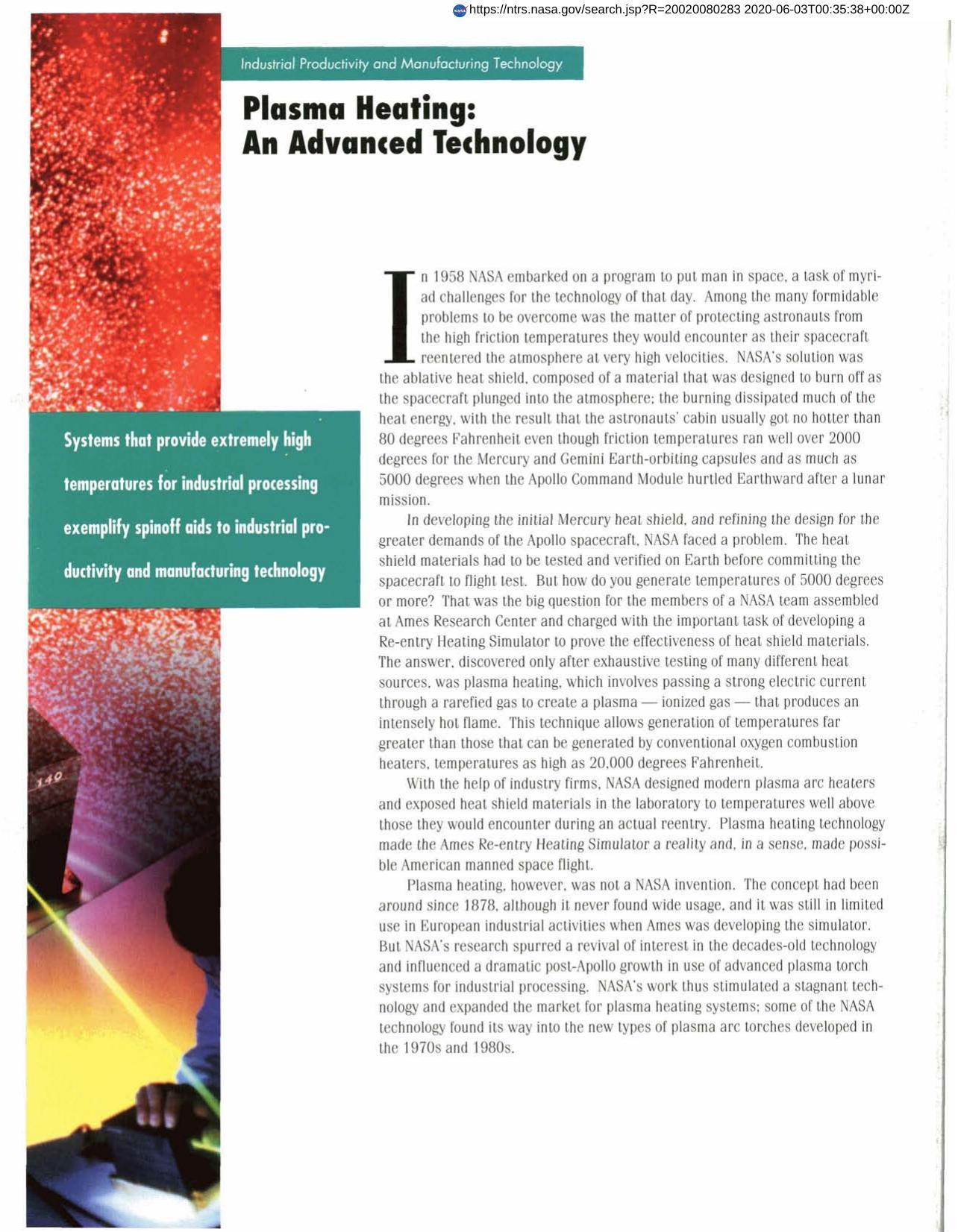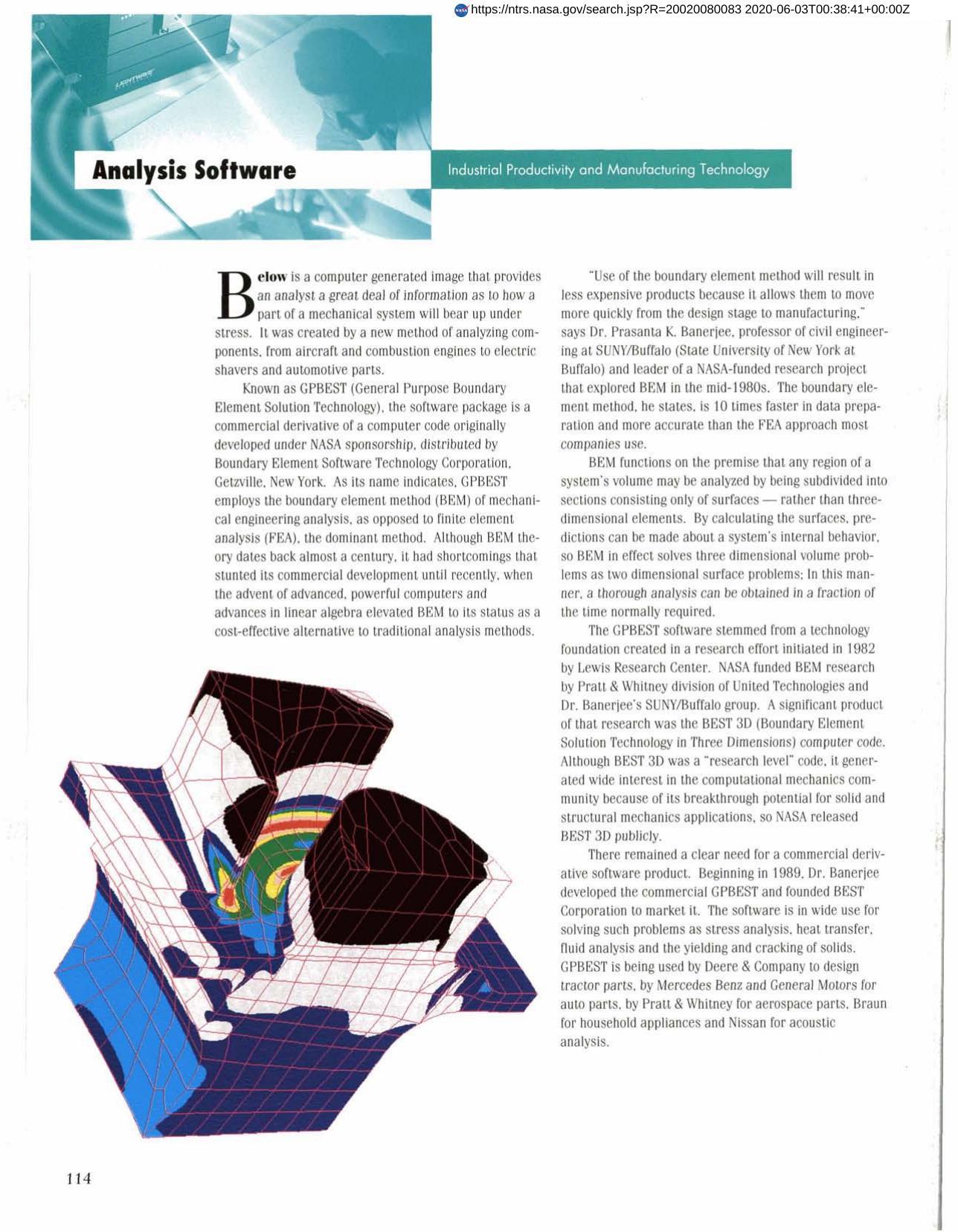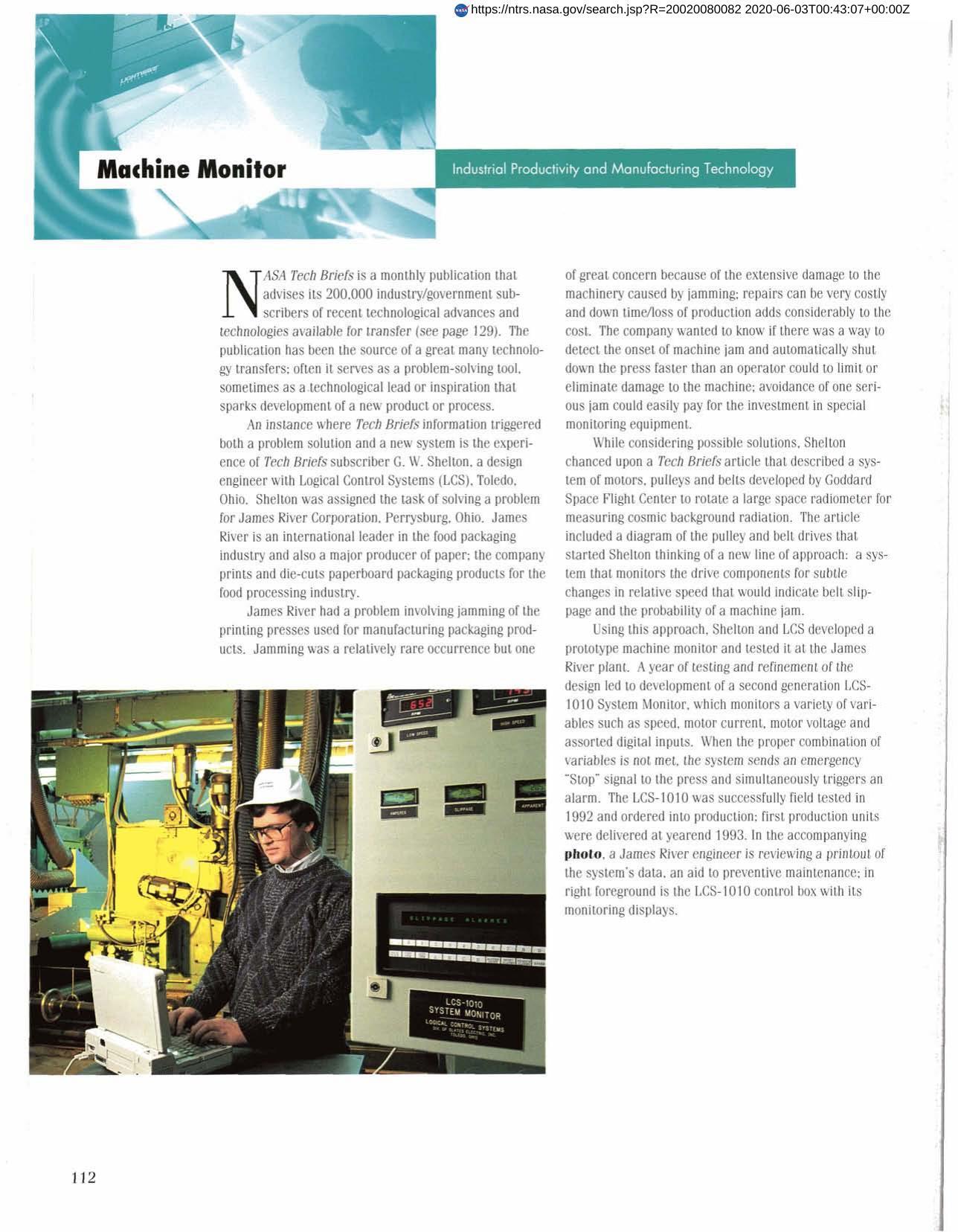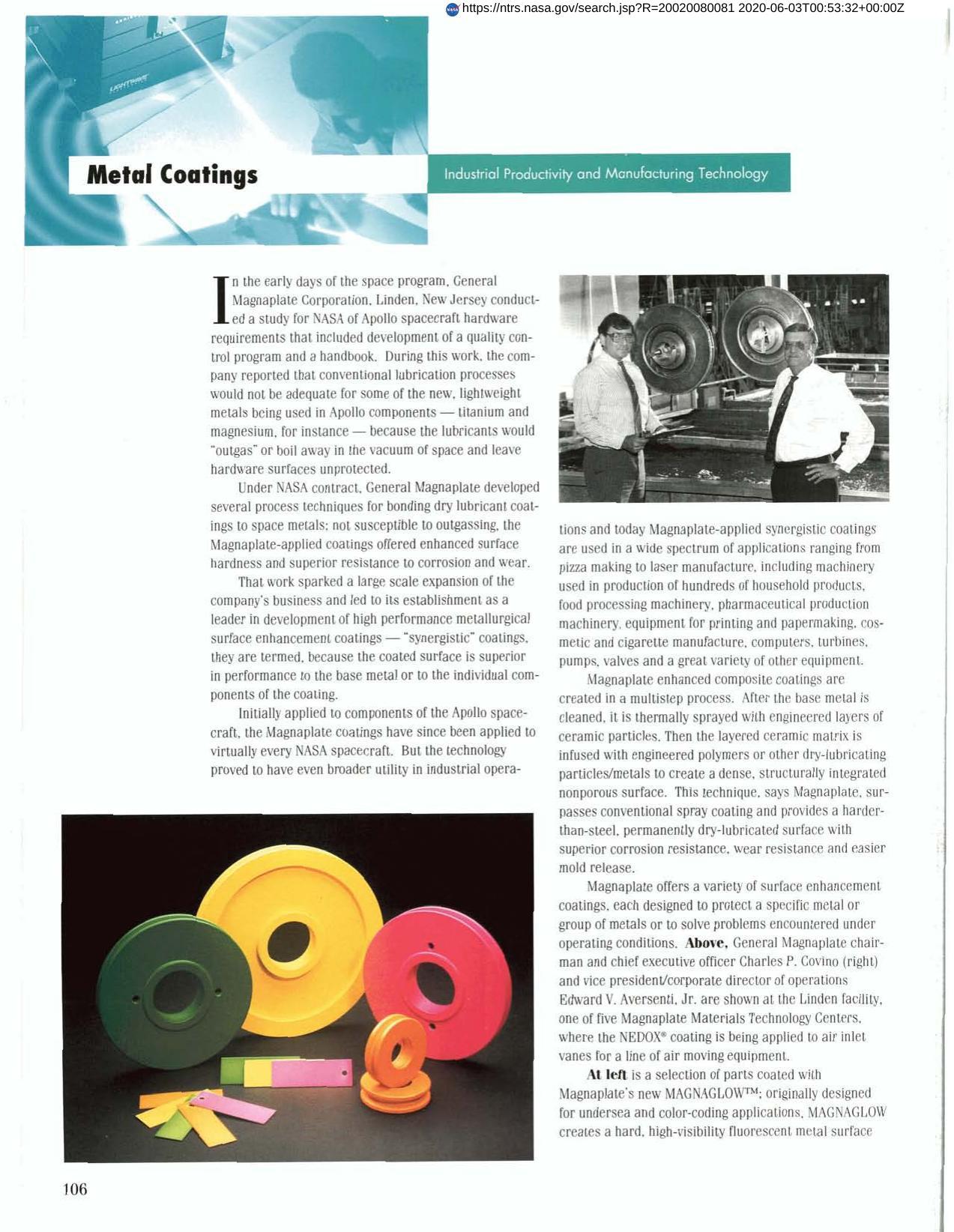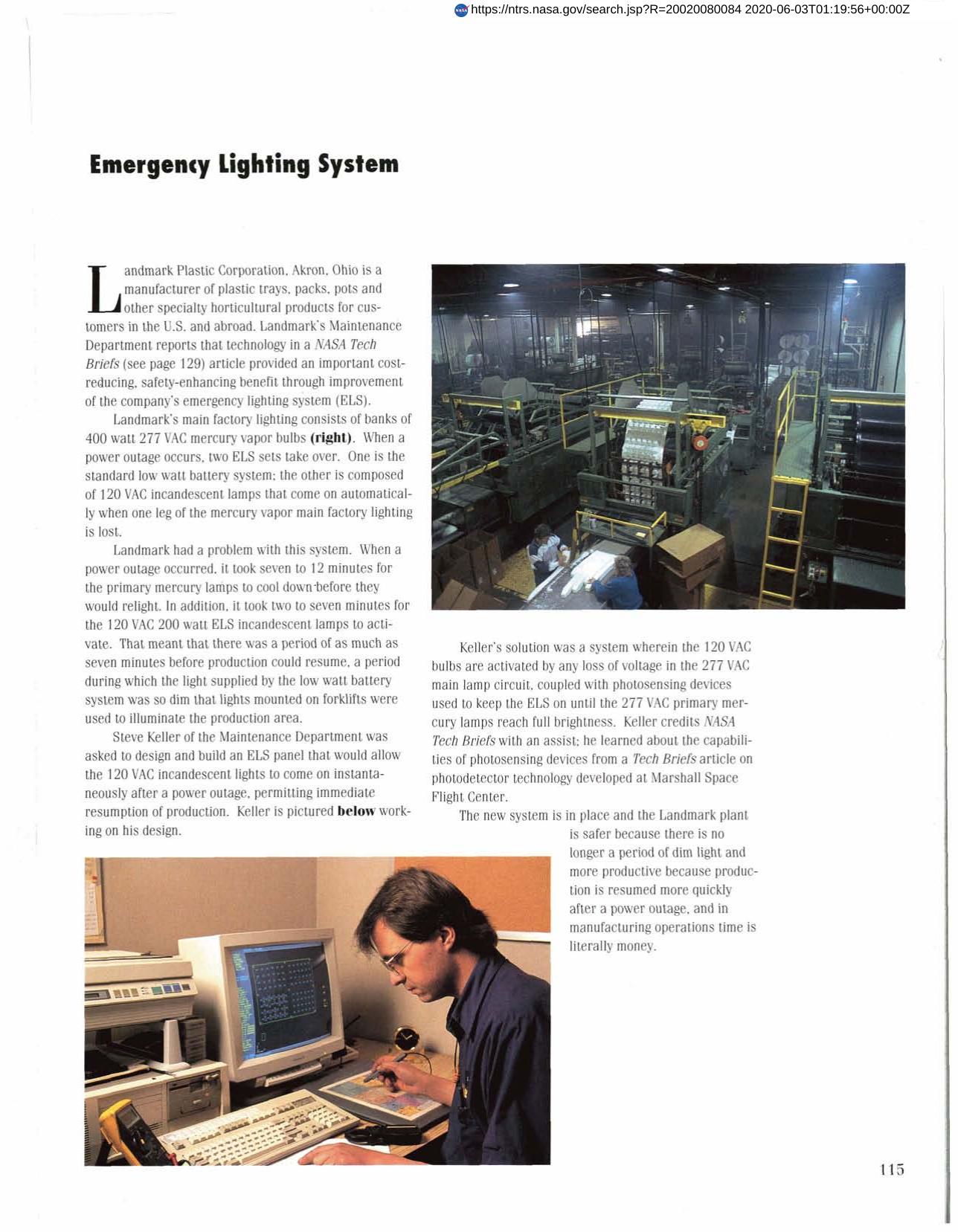
Emergency Lighting System
Originally published in 1994
Body
When power outages occurred at Landmark Plastic Corporation, it took seven to twelve minutes for the primary mercury lamps to cool down enough to relight and two to seven minutes for the ELS incandescent lamps to relight. Production could not resume for as much as seven minutes. An article in NASA Tech Briefs describing the capabilities of photosensing devices led Landmark employee, Steve Keller to design a system now activated by any voltage loss in the main lamp circuit and coupled with photosensing devices used to keep them on until the primary mercury lamps reach full brightness.
Full article: http://hdl.handle.net/hdl:2060/20020080084
Abstract
When power outages occurred at Landmark Plastic Corporation, it took seven to twelve minutes for the primary mercury lamps to cool down enough to relight and two to seven minutes for the ELS incandescent lamps to relight. Production could not resume for as much as seven minutes. An article in NASA Tech Briefs describing the capabilities of photosensing devices led Landmark employee, Steve Keller to design a system now activated by any voltage loss in the main lamp circuit and coupled with photosensing devices used to keep them on until the primary mercury lamps reach full brightness.

Emergency Lighting System

Emergency Lighting System




